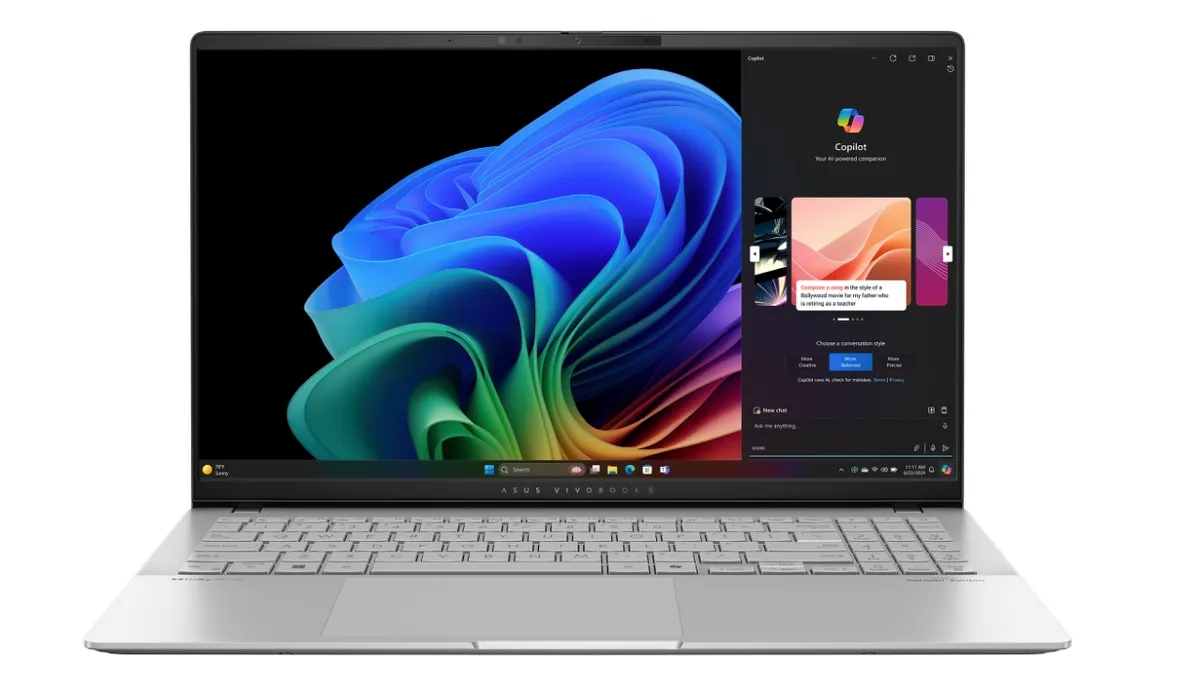Intel X86 technology has dominated the world of Windows computers for some time, with most processors based on this process. However, the British company ARM, which has taken over the mobile sector and thinks in a completely different way, has decided to conquer this field as well. This year it presented its first processor in the form of the Snapdragon X Elite, developed in collaboration with Microsoft and Qualcomm, which actually uses ARM technology. Many major companies have indicated that they are open to this solution as well. ASUS was the fastest, as it was the first to present such a laptop in Hungary.
This is the ASUS Vivobook S 15, which we got our hands on to see if this concept can work. Also to see if there is any difference compared to traditional products.
What is ARM processor technology?
The peculiarity of ARM technology is that hardware components, such as a graphics controller, communication chips, memory and the processor itself, are located in a single unit. In theory, this solution allows for better optimization and more efficient use of resources. In addition, power consumption also decreases, the device heats up less, so there is no need for intensive cooling, which leads to a lower noise level. Another advantage is that the size also decreases, so in theory it becomes possible to produce smaller and thinner products.
However, it is also a fact that the so-called system chips are more difficult and expensive to service. Also, the user does not have the option to change components to his taste, for example increasing the memory size.
Very stylish laptop
However, it immediately becomes clear that the technology makes it possible to create thin and light devices. Compared to a product with a 15.6-inch screen, it weighs only 1.4 kg and is less than a centimeter and a half thick.

The product has a very elegant look, and the important connectors are not missing. That's how they packed USB-C, traditional USB, HDMI and headphone ports, and they didn't skimp on the card reader either. The hinges keep the screen stable, which is not surprising, as ASUS products usually do well in this area. The backlit keyboard looks great and blends in with the case of the device. Most importantly, the sensitivity and travel of the buttons are also decent. It's really comfortable to type for long hours. The size of the built-in mouse is large enough, and its feel and stability are decent: fortunately, it doesn't shake or wobble.
It is also important that it has the official US MIL-STD 810H certification, a standard regulated by the US military. This proves that it is resistant to moisture, dust, extreme heat and impacts.
During the process
The truth is that it is practically silent in operation and also performs better in terms of heating than its traditional relatives. It is equipped with a 70Wh battery with an average capacity, but it also stands out from the rest in terms of operating time. We found that it lasted between 12 and 17 hours on a single charge, depending on usage, which is excellent value these days. So ARM technology really offers tangible and tangible advantages.
Windows is handled correctly by the device. Microsoft programs, as well as office applications, communications and media players in general, work flawlessly. The situation is different with games. Since a dedicated video card is missing, it is not right to run games with better 3D graphics. The image refresh rate is low, and freezes are also experienced. The product also received Microsoft's Copilot system, which should make work more efficient with various AI actions. To be honest, we are not convinced of its usefulness, but perhaps after a few months of use we will have a different opinion.












































